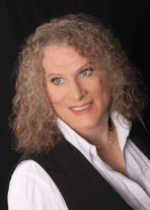LGBTQ Crime Writers on the Future of Queer Crime Fiction

Author: John Copenhaver
May 8, 2019
Crime fiction by and about LGBTQ people has a rich history, but as a subgenre, it has been largely overlooked by high profile publishers and mainstream audiences. With increasing visibility, the desire to seek out these stories has grown, perhaps in response to our fraught political environment, and perhaps (I hope) due to a genuine hunger to embrace new variations of well-worn crime writing subjects. As someone who attends many of the mystery conferences, including Bouchercon, Malice Domestic, and Thrillerfest, I’ve noticed a steady growth in interest in queer crime fiction from a wider audience.
As new readers have been finding our books, queer authors have been finding each other. Recently author Kristen Lepionka started the Queer Crime Writers Group and @CrimeQueer, two online spaces that have brought writers together. Since the positive energy is building in the community, I reached out to Kristen as well as three other prominent queer crime writers—Michael Nava, Renee James, and Catherine Maiorisi—and asked them questions about the genre and its significance. I hope this Q&A will give readers a sense of the diversity of perspectives, experiences, and backgrounds in this corner of the writing community.
Meet the writers:
Michael Nava is the author of an acclaimed series of crime novels featuring the gay, Latino criminal defense lawyer Henry Rios. His first new Rios novel in twenty years, Carved in Bone (Persigo), will be published in the fall, and he’s re-releasing revised versions of three of his Rios novels this summer. He also has adapted his debut Rios novel, Lay Your Sleeping Head, into an 18-episode podcast.
Renee James is the author of the award-winning Transition to Murder (Riverdale Avenue) which began her Bobbi Logan series about a trans hairdresser who has a talent for solving crime. Her other Logan titles include A Kind of Justice (Oceanview) and Seven Suspects (Oceanview), and she’s currently shopping her latest Logan title, North Rush.
Catherine Maiorisi has written two books about NYPD Detective Chiara Corelli, A Matter of Blood (Bella Books), nominated for a “Best Lesbian Mystery” Lambda Literary Award this year, and The Blood Runs Cold (Bella Books), released in February. She’s currently fleshing out ideas for the third Corelli mystery, targeted for publication in 2020.
Kristen Lepionka’s series about the bisexual P.I. Roxane Weary has received much acclaim, including a Shamus Award for Best First P.I. novel. She hosts a podcast called Unlikeable Female Characters and her next Weary novel, The Stories You Tell (Minotaur), will be out this July.
Why did you decide to write crime fiction with queer characters? What about the genre drew you in, especially since crime fiction hasn’t been particularly kind to LGBTQ characters?
Nava: I began writing my first novel when I was studying for the bar exam in the summer of 1981. When I began reading noir, I identified with the classic P.I., like Raymond Chandler’s Philip Marlowe, the despised outsider who actually embodies the virtues that society pretends to honor—like courage, persistence and loyalty—but rarely demonstrates. He seemed like a metaphor for being gay.
Of course, Chandler was gratuitously homophobic (although in The Long Goodbye, Marlowe has what can only be described as a romance with another man, Terry Lennox.) But then I discovered the Brandstetter novels of Joseph Hansen. Brandstetter is an openly gay private investigator who investigates death claims for an insurance company. Hansen’s brave and beautifully written books gave me the permission I needed to make my own attempt at writing a mystery.
James: For me, the question was, what genre to employ for my transsexual character? My motivation was to try to create a story that would allow straight people an opportunity to see the world through a transsexual woman’s eyes. I had created the character by writing a fictional journal about a transwoman’s first year of transition. When I decided to make it into a novel, I chose the mystery/thriller genre because I was reading that type of book then and because I liked the stresses you can put on a character by involving them in violent crimes and forcing them to make existential and moral choices.
I didn’t know the genre had been rough on LGBTQ people, but I was aware that the full spectrum of the entertainment media at that time (the early 00s) treated LGBTQ people with a lot of derision, transwomen in particular. So, I created a tough, funny, oversized transwoman who was hyper sensitive to rejection, but also gritty and determined to go down fighting if she had to go down at all.
Lepionka: I knew that I wanted to be a mystery writer before I knew that I was queer. I fell in love with the genre at an early age—first reading my mother’s Mary Higgins Clark books, then branching out into Robert B. Parker, Ed McBain, and Raymond Chandler (as I always say, I was a weird kid). I loved what these stories revealed about human nature. As I was coming to terms with my sexual orientation as a teenager, I started to notice that the mainstream crime fiction genre was lacking in representation of queer characters. I wanted to write the kind of book I wanted to read.
Maiorisi: Actually, I didn’t decide. A Matter of Blood, the first in my series, was the first fiction I wrote. Through many drafts, Chiara was straight, just like the detectives I’d read all my life. In one of my rewrites, I decided Corelli needed a love interest, so I created Brett Cummings, a tall, gorgeous stockbroker with shoulder-length blond hair and beautiful green eyes, a guy. Corelli and Brett meet for the first time in Brett’s office where she is waiting to interview him. She examines the photos on a credenza and focuses on one with a tall blond guy leaning against the mast of a sailboat holding an equally gorgeous woman, obviously a relative. Corelli assumes the guy is the stockbroker. But when Brett walks in, Corelli is stunned to see the woman and not the man. And so was I.
How can crime writers—queer or otherwise—avoid the pitfalls of a genre that has all too often cast queer characters as victims or villains?
Lepionka: Ah, so many pitfalls. We owe our readers fully realized, complex characters—no cardboard cutouts. A lot of the damage to queer identities in crime fiction comes from lazy writing. From trying to skip over the hard work of building authentic, vibrant people. If we remember that—for all of our characters—it will go a long way. In a perfect world, we could write about queer characters in all roles in the story. Hero, sidekick, supporting cast, and, yes, villain and victim. But the genre has a bit of work to do before we get to that point.
James: I’ve been encouraging my straight colleagues to employ trans characters in secondary roles in their mysteries and thrillers to help define the hero/heroine in new ways. For this to work, the trans person needs to be someone the lead character learns to respect after they interact. For example, a female detective feels nervous around the transwoman neighbor but finds out she has a successful career and is pleasant to talk to—and maybe is the only person available to babysit her sick toddler when she has to be on a case. As a writer, you can work with the reluctance of the mom when she makes the decision to ask the neighbor to babysit, her worry when she’s at work, and the lessons she has learned when she gets home and finds she has a loving neighbor who can be counted on. If you write upmarket crime fiction, the trans person can be a catalyst for the lead character to contemplate the real meaning of gender.
Nava: If you’re creating a character whose life experience is unlike your own—a straight writer writing an LGBTQ character, a white writer writing a Latino character, a male writer writing a female character—you need, as much as you can, to put yourself imaginatively into that character’s skin and to do the relevant research.
Maiorisi: No matter what type of characters we write—queer, POC, trans, etc.—crime writers must try to avoid the stereotypes that have been pervasive in the past. In life, we are victims and villains and heroes, and our characters should reflect that truth. The problem is writers who treat queers as less-than, characters who can never have a happy ending. My queer characters are strong. They have integrity and contribute to society.
Why is it important to be an out queer crime writer at this point in history? In other words, how might crime and queerness be important considering our current political situation?
Nava: The situation hasn’t changed that much since my first novel was published in 1986. LGBTQ people are still outsiders. Don’t let marriage equality fool you. Twenty-eight states still lack legislation that protects LGBTQ people from discrimination in employment, housing, and public services. There is no federal anti-discrimination statute. The movement to secure “religious exemptions” in providing services to LGBTQ people only represents the latest tactic of the religious bigots in their 40-year war on us and ours. Meanwhile, outside the US and western Europe, gay men are still being persecuted, imprisoned, and even murdered because they are gay. So, hell yeah, there are still stories to be told in this genre.
Lepionka: Crime novels have always been social novels, addressing problems in society. In that sense, they’ve always been important and always will. They reflect the reality of the time. And the reality of this time is that LGBTQ rights are still not safe. Writing about that, even through the lens of crime storytelling, is something of a radical act. Representation matters, and social change comes about in a lot of ways. Are mystery novels going to change the world? No. (Well, maybe). But if what we do expands the consciousness of a single reader, that’s not nothing.
Maiorisi: It’s important to be a visible lesbian and I often find myself in a room of straight writers outing myself. As writers of crime fiction, we can influence straight (and other queer) writers to portray queer characters positively. By writing stories that contain realistic portrayals of queer characters that go beyond the stereotypes, we can influence readers. The other aspect of stories that depict us as we are is that readers may recognize themselves in our characters and feel less alone.
James: I never thought of it as being important, since my books aren’t best-sellers or fashion-setters. But me being out and visible has had an impact: Many of my writing colleagues have now met a transwoman who has been successful in life and has an intellect and a sense of humor. My Bobbi Logan books have reached a number of readers with the same message. It doesn’t have to be one of us achieving Lee Child levels of success, if hundreds or maybe thousands of us are reaching out with our varied stories and characters.
How would you like to see queer crime fiction evolve in reach? Subject matter? Or even style?
James: I hope we get to a point where the sexual or gender preference of characters doesn’t matter unless that is the specific point of the story.
Maiorisi: I would like to see queer crime writers and our books emerge from the niche we currently occupy and become part of mainstream crime fiction.
Lepionka: Younger readers! The audience for crime fiction in general skews older, even though millennials consume murder-y content through other media (podcasts, TV series, etc.). I want queer crime fiction to reach people who listen to “My Favorite Murder” or who read splashy crossover thrillers. It has been relegated to its own little shelf for too long.
Nava: I’m still waiting for other queer writers of color to take up Henry Rios’s mantle. I would also love to see more trans writers enter into this genre. One of my projects is my small own small press, Persigo Press, through which I hope to publish queer writers and writers of color who work in the genres, including crime fiction. If all goes well, I hope to be taking submissions in fall 2020.
Maiorisi: I adore seeing myself in the kickass women protagonists of lesbian crime fiction. Writers on my list include, but are not limited to, Ann Roberts, Cari Hunter, Cheryl Head, Gerri Hill, Penny Mickelbury, Erica Abbot, and Andrea Bramhall. My all-time favorite lesbian crime writer is J.M. Redmann. Her unapologetic lesbian PI Micky Knight is a complex and fascinating character in the mode of the early straight male PIs.
James: I’m a fan of my friend, Dharma Kelleher, whose gritty crime novels include the Jinx Ballou bounty hunter series. Jinx is a transwoman, but mostly she’s a tough, fearless feminist who refuses to be intimidated by anyone.
Nava: I just re-read all twelve of Joseph Hansen’s Brandstetter novels for an essay I’m writing about him for the Los Angeles Review of Books. Hansen’s books are as good or better than any of the other acclaimed crime fiction writers of his generation, the Ross Macdonalds and Tony Hillermans.
Lepionka: I also love the Brandstetter series. People always gush about Raymond Chandler’s prose (and don’t get me wrong, I love Chandler too), but Hansen occupies the same space and deserves as much reverence. Given that the series featured an openly gay protagonist in 1970, it was so ahead of its time—we owe him so much.
Seven Suspects (The Bobbi Logan Series, Book 3)
By Renee James
Oceanview Publishing
Hardcover: 9781608092550
October, 2017
The Stories You Tell: A Mystery (Roxane Weary, Book 3)
By Kristen Lepionka
Minotaur Books
Hardcover: 9781250309358
July, 2019
The Blood Runs Cold (A Chiara Corelli Mystery)
By Catherine Maiorisi
Bella Books
Paperback: 9781642470260
February, 2019
Henry Rios Mysteries: Season 1: Lay Your Sleeping Head, 18 episodes
Written and Produced by Michael Nava
Persigo Press
January, 2019
Available on iTunes, Overcast, or wherever you listen to your podcasts




